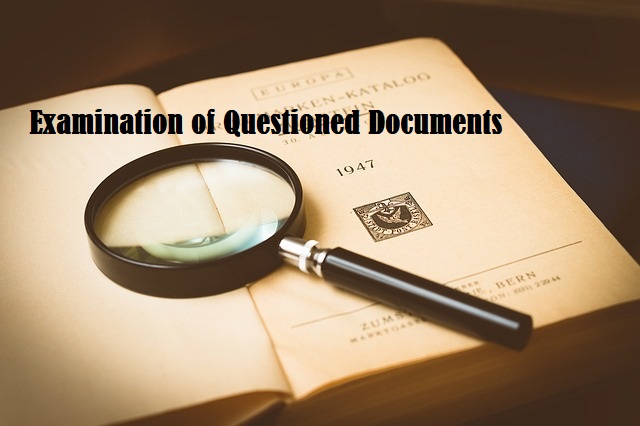-
ceo.bfi@gmail.com
Send Email
-
2C, C-6/A Block, Janakpuri, Delhi India 110058
Visit Our Office
99902-92279
Confidentiality Guaranteed
99902-92279
Confidentiality Guaranteed

Jul
Artificial Intelligence and Its Applications in Forensic Sciences

AI in forensic science
For decades, solving crimes has been a painstaking process involving countless hours of data analysis, manual evidence collection, and sometimes even lucky breaks. But today, a new partner is reshaping this journey—Artificial Intelligence. AI is transforming forensic science by injecting speed, precision, and intelligence into processes that were once slow and prone to human error.
We’re entering a world where computers don’t just support investigations—they actively participate in them. From analyzing facial features to detecting fraud buried deep in terabytes of digital data, AI is proving itself as an indispensable forensic ally. But how exactly does it work? Let’s unravel this digital detective story.
Understanding Traditional Forensic Techniques
Forensic science has historically encompassed the meticulous examination of crime scene evidence such as fingerprints, blood samples, weapon residues, handwritten notes, and more. Techniques like DNA profiling, ballistic comparison, and toxicology tests have long been used to match suspects with crimes.
But this conventional toolkit relies heavily on human analysis. Whether it’s comparing two fingerprints or interpreting the trajectory of a bullet, human perception has always played a pivotal role.
Limitations in Conventional Forensics
Despite their effectiveness, traditional methods are not without flaws. They often suffer from:
Time constraints: Manual analysis is labor-intensive and slow.
Subjectivity: Different experts might interpret the same evidence differently.
Scalability issues: Investigators struggle with large volumes of digital and physical evidence.
Human fatigue: Long hours and complexity can lead to errors or overlooked details.
These gaps have created a perfect opportunity for technology—specifically AI—to fill in and elevate forensic efficiency and accuracy.
What Exactly Is Artificial Intelligence?
AI refers to systems and algorithms that can simulate human intelligence—they learn from data, reason through scenarios, and make informed decisions. Rather than relying on predefined rules alone, AI models can adapt, evolve, and improve over time.
In forensic applications, AI serves as a tireless analyst capable of sifting through mountains of information, identifying hidden patterns, and presenting results that guide investigations toward justice.
Why AI and Forensics Are a Perfect Match
Forensics demands precision, pattern recognition, and data interpretation—all of which are AI’s strong suits. With the ability to handle multi-modal data (images, audio, text, etc.), AI systems can:
Automate repetitive tasks
Reduce investigative time
Improve evidence interpretation
Offer predictive insights and alerts
In short, AI makes forensic science more efficient, accurate, and futuristic.
Advanced Facial Recognition and Biometrics
Facial recognition has evolved from simply matching photos to analyzing facial geometry, skin textures, and even expressions. AI-driven systems can:
Compare images with millions of mugshots within seconds
Detect and recognize faces in poor lighting or from difficult angles
Identify disguised individuals using deep learning
This capability is especially useful in airports, border security, and mass surveillance where rapid identification is crucial.
AI for Enhancing CCTV and Security Footage
CCTV footage is often blurry, pixelated, or lacking clear visuals. AI algorithms can enhance these recordings using image super-resolution, noise reduction, and detail amplification. It can isolate movements, extract license plates, or even detect weapons in real time.
Detection of Deepfakes and Tampered Media
Manipulated media is a growing challenge in forensic investigation. AI tools can analyze pixel-level inconsistencies, metadata, and anomaly patterns to detect deepfakes or forged content. This ensures that digital evidence maintains its integrity and authenticity in courtrooms.
AI's Application in Digital Forensics
Tackling Cybercrime with AI Tools
With cybercrime on the rise—ransomware, identity theft, phishing attacks—AI is now essential. It helps investigators by:
Monitoring large network activity to detect anomalies
Identifying malware behavior using behavioral signatures
Tracing digital footprints left behind in browsers, emails, and log files
AI’s ability to learn from new cyber threats means it’s constantly evolving with the threat landscape.
Mobile and Cloud Forensics Revolutionized
Modern criminals often leave trails in smartphones, cloud services, and encrypted messaging apps. AI-driven forensic tools assist by:
Recovering deleted files
Organizing and analyzing chat logs and call records
Extracting hidden data from cloud backups
What once took days of manual digging can now be done in minutes with the help of AI.
AI in Biological and Physical Evidence Analysis
Traditional fingerprint analysis requires an expert to visually compare ridge patterns. AI takes this a step further by:
Automatically matching prints from large databases
Detecting partial or smudged prints
Minimizing errors due to human bias
This speeds up suspect identification and strengthens the reliability of evidence.
Forgery detection is another area AI excels in. It evaluates handwriting characteristics such as:
Stroke pressure and curvature
Letter spacing and alignment
Variations in rhythm and speed
AI can even detect whether a signature was created by a robotic arm or copied from a template.
Biometric Identification and Facial Recognition
Facial Recognition Systems
Using deep learning, facial recognition tools can:
Match blurry CCTV footage to existing databases
Identify people even with changes in lighting, angle, or disguise
Analyze micro-expressions to determine stress or deception
These systems are widely used in airports, public spaces, and during protests to track persons of interest.
AI models can analyze voice patterns to:
Confirm identity based on vocal signature
Detect emotional tone or stress
Uncover inconsistencies suggesting deception
These tools are vital in hostage negotiations, phone threats, and fraud investigations.
Natural Language Processing (NLP) in Forensic Analysis
Uncovering Clues in Emails, Chats, and Social Media
NLP allows forensic software to analyze unstructured data from texts, emails, and online posts. AI algorithms can:
Spot keywords associated with illegal activities
Identify patterns in communication networks
Reveal behavioral trends before a crime occurs
This proactive analysis has already prevented numerous violent incidents across the globe.
Using NLP to Detect Lies and Psychological Cues
Certain phrases, hesitation patterns, or over-explaining in a message can indicate deception. NLP models trained on linguistic psychology help forensic experts determine the intent behind words—an invaluable advantage during interrogations and trials.
Audio and Video Forensics
Enhancing Audio Recordings
AI algorithms can:
Reduce background noise
Isolate voices
Restore clarity to low-quality recordings
This is essential when analyzing surveillance audio, phone calls, or interview recordings.
Detecting Deepfakes and Video Manipulation
As deepfakes grow more convincing, AI is also used to fight them. Detection tools analyze:
Facial micro-movements
Eye blinking patterns
Lighting inconsistencies
Audio-visual sync issues
These tools help verify video evidence presented in court.
Predictive Policing and Crime Prevention
Crime Pattern Recognition and Forecasting
By analyzing historical crime data, AI can identify hot zones—areas likely to experience crimes at specific times. These predictions help law enforcement allocate resources more effectively and implement preventive measures.
Resource Optimization for Law Enforcement
AI can determine when and where patrols should be increased, where surveillance should be intensified, and what kind of criminal activity might occur—allowing officers to be proactive rather than reactive.
Case Studies of AI in Action
Solving the Golden State Killer Case
While DNA analysis helped break this famous case, AI was instrumental in:
Mapping crime patterns from decades-old data
Comparing MO (modus operandi) across unsolved cases
Helping genealogical researchers sort through family trees faster
AI’s Contribution in Narcotics and Human Trafficking
AI algorithms analyze dark web marketplaces, delivery patterns, and communication threads to track illicit drug movements and trafficking networks. This has led to numerous large-scale busts and rescues.
The Future of AI in Forensic Science
As AI continues to evolve, we can expect more advanced applications, such as:
Real-time crime scene analysis using drones and AI vision
Emotion-reading AI in interrogations
AI-generated case simulations for jury presentations
AI will increasingly become a core component of every forensic department, aiding not just in solving crimes but in building more reliable, data-driven justice systems.
Conclusion
AI isn’t just helping forensic science—it’s redefining it. It’s giving investigators tools that were unimaginable a decade ago. From cracking digital mysteries to unveiling truths buried in a sea of data, AI is the ultimate sidekick for modern-day forensic experts.
But with great power comes great responsibility. As long as we use AI ethically, transparently, and collaboratively, it will continue to illuminate truth and empower justice for generations to come.
Call To Action

Are you interested in learning more about forensic expert or seeking professional forensic-expert services? Contact us today to inquire about our expertise.
📞 Contact Us: 9990292279
🌐 Visit Our Website: https://forensicexpertinvestigation.com/
✉️ Email: ceo.bfi@gmail.com




